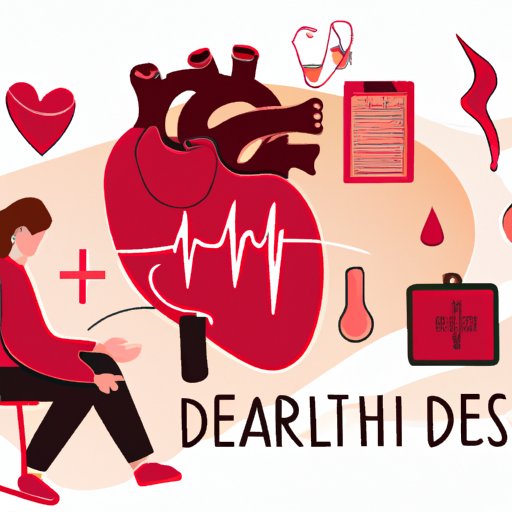
Introduction
According to the Centers for Disease Control and Prevention, heart disease is the leading cause of death in the United States. Recognizing the symptoms of heart disease early on is critical for treatment and prevention. This article is designed to provide information on monitoring heart health at home, establishing healthy habits, managing stress, and recognizing symptoms of heart disease. The target audience is anyone interested in learning more about heart disease, including those with a family history or those experiencing symptoms.
Understanding Heart Disease
Heart disease refers to a range of conditions that affect the heart and cardiovascular system. These conditions can include high blood pressure, coronary artery disease, and heart failure. Family history can play a significant role in the development of heart disease, and it is essential to discuss any family history with a doctor. There are many forms of heart disease, and it is important to understand the different types and their symptoms.
Monitoring Heart Health at Home
Monitoring blood pressure and cholesterol at home is key to preventing and treating heart disease. High blood pressure and cholesterol levels can increase the risk of heart disease. It is recommended to measure blood pressure and cholesterol levels regularly to identify any concerning changes. Home monitoring kits are readily available, and most are user-friendly. It is important to follow the instructions included with the kit and maintain accurate records of readings.
Tips for monitoring blood pressure at home include using the correct cuff size, measuring at the same time each day, and remaining still during the reading. To monitor cholesterol levels, it is important to fast for at least 12 hours before taking the test. Both blood pressure and cholesterol levels should ideally be within a specific range. However, it is essential to seek medical attention if levels are consistently outside this range.
Establishing Healthy Habits
Healthy habits including weight, diet, and exercise are important components in treating and preventing heart disease. Strategies for weight management can include tracking food intake, focusing on whole foods, and keeping active. Exercise should be a regular part of any routine, with at least 30 minutes of moderate exercise each day. A heart-healthy diet emphasizes fruits, vegetables, and whole grains, and can help manage cholesterol levels.
Tracking progress can be helpful for establishing healthy habits. This might include keeping a food diary or tracking physical activity. If needed, adjustments can be made based on progress and feedback from a doctor.
Managing Stress
Stress can have a significant impact on heart health. Chronic stress can lead to high blood pressure and other cardiovascular health issues. Managing stress is key to preventing the development of heart disease. Strategies for managing stress include yoga, meditation, and regular exercise. It is also important to practice healthy sleep habits, such as avoiding screens before bed and creating a calming sleep environment.
Making stress reduction a priority in daily life can have a significant impact on overall well-being and heart health. There are a variety of tools and resources available to help manage stress more effectively.
Recognizing Symptoms of Heart Disease
Recognizing the symptoms of heart disease is crucial for early treatment and prevention. Common symptoms of heart disease include chest pain, fatigue, and shortness of breath. Other symptoms may include dizziness or fainting. It is essential to keep track of any symptoms experienced—this can be done with a symptom log or journal. Warning signs specific to different types of heart disease can include palpitations, leg swelling, or nausea. If experiencing any symptoms, it is important to seek medical attention promptly.
Conclusion
Monitoring and managing heart health at home is an essential component of preventing and treating heart disease. This article provides information on understanding heart disease, monitoring heart health, establishing healthy habits, managing stress, recognizing symptoms of heart disease, and additional resources for prevention. It is important to stay up-to-date with healthcare appointments and to communicate any concerns with a doctor.
Together, these strategies can help reduce the risk of heart disease and improve overall well-being.




